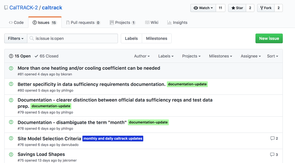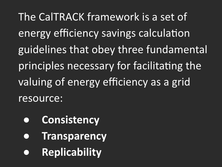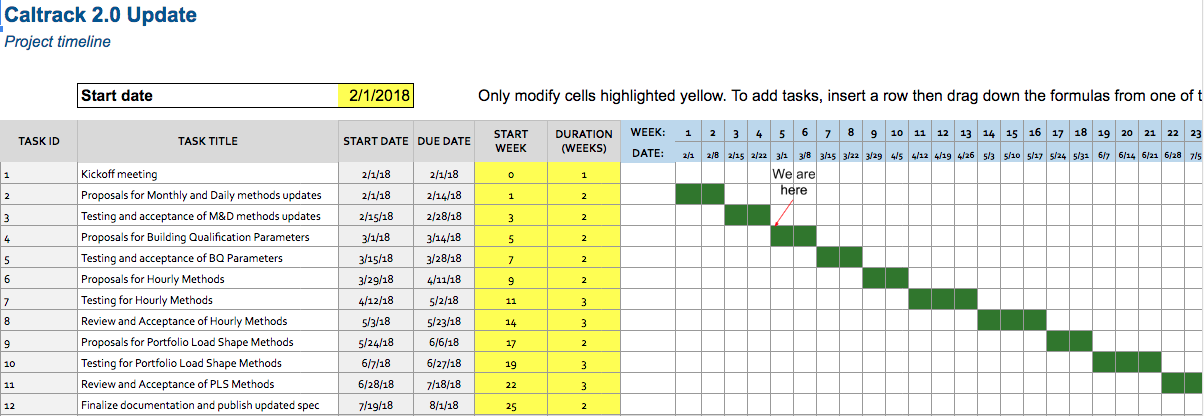|
Week Three CalTRACK Update As week 3 comes to a conclusion, we continue to “Test Monthly and Daily Methods”. Here are a few updates that have occurred this week and some early weather data visualizations. (Click links to GitHub) Methods Updates:
To ensure effective communication, it is important that we are precise with our vocabulary and identification. Please read these updates to ensure that we are consistent in our discussions and documentation.
As we enter week 4 (starting 2/26), we will continue to accept data from testing of “Monthly and Daily Methods”. Starting on Wednesday (2/28), we will begin accepting proposals for “Building Qualification Parameters. We look forward to reviewing your test results on GitHub!
Homework:
1 Comment
 As we complete Week Two (2/12-2/16), we conclude our discussion of “Proposals for Monthly and Daily Methods Updates” and begin testing proposed methods. Here are the six main updates to the daily and monthly methods (click links to jump to GitHub): Criteria for choosing weather stations
Adjustment to monthly data for models
Defining maximum baseline period
Include search grid to determine balance points on Monthly Methods
Expand Balance Point Search Range
Site Model Selection Criteria
In this upcoming week (starting 2/19), we look forward to beginning the testing process for our daily and monthly methods! We are encouraging participants to test models on their own data and share results on the GitHub. Please include information about data characteristics with the results. Homework:
 Thank you to everyone for contributing to a very successful kick off meeting yesterday! As promised - here is your homework in preparation for the next meeting. Let us know if you have any trouble getting to these links. 2/1/2018 Homework: 1.) Register on GitHub - CalTRACK-2; 2.) Review CalTRACK.org and http://docs.caltrack.org for past content and decisions; 3.) Respond to doodle poll for new standing meeting time; and 4.) Post specific issues on GitHub CalTRACK-2 - Issues Catch up: If you missed the meeting – you can view it here: |
The purpose of this blog is to provide a high-level overview of CalTrack progress.
For a deeper understanding or to provide input on technical aspects of CalTrack, refer to the GitHub issues page (https://github.com/CalTRACK-2/caltrack/issues). Recordings
2019 CalTRACK Kick Off:
CalTRACK 2.0 July 19, 2018 June 28, 2018 June 7, 2018 May 24, 2018 May 3, 2018 April 12, 2018 March 29, 2018 March 15, 2018 March 1, 2018 February 15, 2018 February 1, 2018 Archives
March 2024
|


 RSS Feed
RSS Feed
